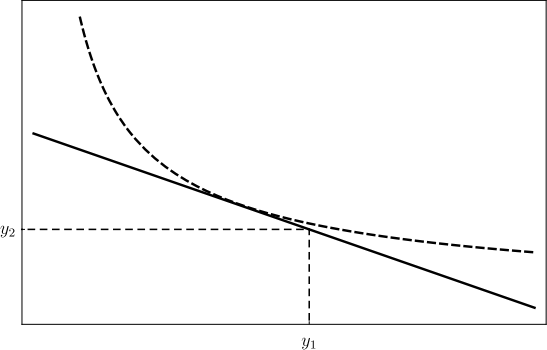Econ 311: Advanced Macroeconomics Problem Set 1
Hello, dear friend, you can consult us at any time if you have any questions, add WeChat: daixieit
Econ 311: Advanced Macroeconomics
Problem Set 1
31 July 2023
. Submit your assignment as a single file via CANVAS by 5pm 11 August 2023 (Week 4).
. This assignment consists of 3 main questions and is worth 15% of the final grade.
. The weight of the question and, where relevant, the word limit appear next to each question.
. Use appropriate word processing software to write your answers.
. Use Excel (or its analogues) or MATLAB (or its analogues) to make plots and compu- tations.
. All statements and data from external sources (other than lecture notes) needs to be properly referenced (e.g. using Harvard style).
1 General (weight 5%)
1.1
Explain what GNI and GDP are and how they differ. (word limit: 200 words)
1.2
Severe weather hit the North Island of New Zealand in late January 2023, followed by Cyclone Gabrielle in February 2023, which caused large-scale flooding and damage.
These weather events destroyed a significant part of the capital stock at time t.
Assume future labour supply is not affected by the disaster and there are no adjustment costs (i.e., additional costs required to convert goods into investments beyond the value of the investment).
You are required to write an analytical note for the government on the economic impacts of these events (hint: your answers should be guided by formal economic concepts but you should take care to explain your reasoning to be accessible to a general public sector audience).
Make sure your note addresses the following two questions.
1. What are the impacts on short-run interest rates and aggregate investment?
2. What are the long-term effects? (word limit: 350 words)
2 Demand side (weight 5%)
2.1
According to the permanent income hypothesis, how will a representative consumer’s bor- rowing and consumption respond to:
1. An anticipated temporary decrease in income at t = 2.
2. An anticipated permanent decrease in income (at time periods t = 1 and t = 2) when it occurs.
3. Are the answers different if the changes in income are unanticipated, i.e. if they come as a surprise to the consumer? Comment on the size of the marginal propensity to consume.
2.2
Refer to Figure 1 below. Figure 1 should illustrate a consumption bundle (c1 , c2 ) for Yolanda that satisfies the Euler condition. Complete the figure by doing the following:
1. Label the figure to illustrate the optimal bundle (c1 , c2 ).
2. Illustrate the effects of a one-time, unexpected increase in interest rate r on (c1 , c2 ).
3. Explain, in words, how the effect of a rise in interest rates changes Yolanda’s consump- tion over time. You may refer to your figure. (hint: decompose the effect and explain how these forces change Yolanda’s intertemporal trade-off)
(Note: To complete the figure, you will need to replicate Figure 1 on an appropriate computational tool such as Excel.)
3 Supply side (weight 5%)
An economy is populated by a representative household with the following preferences:
u(c) + v(l),
where consumption is c and l is leisure. The household has 1 unit of time so its budget is
c = w(1 − l) − τ,
where w is the wage rate and τ is a tax that the government collects. Notice that τ is a lump-sum tax, not an income tax: the household must pay the same amount regardless of how much income it earns.

Figure 1: Consumption across two periods
1. Set up the Lagrangian for the household’s optimisation problem and find first-order conditions.
2. Use the budget constraint to replace c in the first-order condition to obtain a single equation that relates the household’s choice of l to w and τ .
3. Suppose that the government uses all the tax revenue to hire emergency front-line health workers to help during the COVID-19 pandemic. The government pays these workers the prevailing wage rate. How much time (in units) can the government afford to purchase from the workers? Denote this number by m.
4. Now suppose that, instead of taxing citizens to hire health-care workers, the govern- ment imposes compulsory health-care training and service: the representative house- hold has to dedicate m units of time to administer vaccines, unpaid. The rest of their time is available to use as they please and notaxes are imposed. Set up the household’s optimisation problem under this policy.
5. Show that the representative household’s level of consumption, leisure, hired health- care labour and compulsory health-care labour are the same under both policies. Ex- plain.
2023-09-25